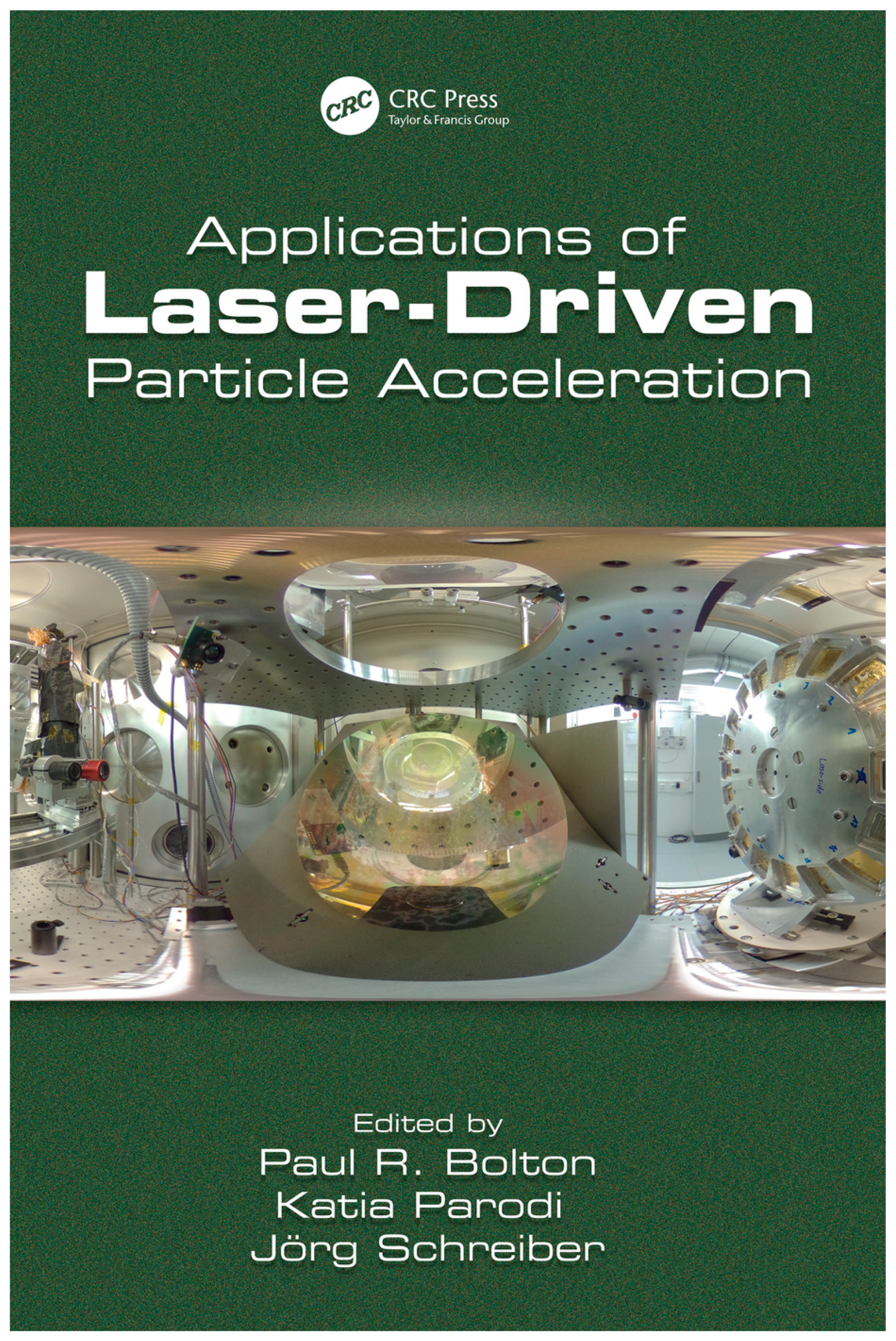Overview of Applications of Laser-Driven Particle Acceleration (Editors Paul R. Bolton, Katia Parodi, and Jörg Schreiber) by CRC Press (Taylor and Francis Group) ISBN 9781498766418—5 June 2018
Abstract
:Overview
Note
References
- Bolton, P.R.; Parodi, K.; Schreiber, J. (Eds.) Applications of Laser-Driven Particle Acceleration; CRC Press: Boca Raton, FL, USA, 2018. [Google Scholar]
- Applications of Laser-Driven Particle Acceleration–CRC Press Book. Available online: https://www.crcpress.com/Applications-of-Laser-Driven-Particle-Acceleration/Bolton-Parodi-Schreiber/p/book/9781498766418 (accessed on 5 October 2018).
- QuBS | Special Issue: Laser-driven Quantum Beams. Available online: https://www.mdpi.com/journal/qubs/special_issues/quantum_beams (accessed on 5 October 2018).
- Bolton, P.R. Novel Quantum Beams from Integrated Laser-Driven Accelerator Systems. Quantum Beam Sci. 2018, 2, 14. [Google Scholar] [CrossRef]

© 2018 by the authors. Licensee MDPI, Basel, Switzerland. This article is an open access article distributed under the terms and conditions of the Creative Commons Attribution (CC BY) license (http://creativecommons.org/licenses/by/4.0/).
Share and Cite
Bolton, P.R.; Parodi, K.; Schreiber, J. Overview of Applications of Laser-Driven Particle Acceleration (Editors Paul R. Bolton, Katia Parodi, and Jörg Schreiber) by CRC Press (Taylor and Francis Group) ISBN 9781498766418—5 June 2018. Quantum Beam Sci. 2018, 2, 25. https://doi.org/10.3390/qubs2040025
Bolton PR, Parodi K, Schreiber J. Overview of Applications of Laser-Driven Particle Acceleration (Editors Paul R. Bolton, Katia Parodi, and Jörg Schreiber) by CRC Press (Taylor and Francis Group) ISBN 9781498766418—5 June 2018. Quantum Beam Science. 2018; 2(4):25. https://doi.org/10.3390/qubs2040025
Chicago/Turabian StyleBolton, Paul R., Katia Parodi, and Jörg Schreiber. 2018. "Overview of Applications of Laser-Driven Particle Acceleration (Editors Paul R. Bolton, Katia Parodi, and Jörg Schreiber) by CRC Press (Taylor and Francis Group) ISBN 9781498766418—5 June 2018" Quantum Beam Science 2, no. 4: 25. https://doi.org/10.3390/qubs2040025
APA StyleBolton, P. R., Parodi, K., & Schreiber, J. (2018). Overview of Applications of Laser-Driven Particle Acceleration (Editors Paul R. Bolton, Katia Parodi, and Jörg Schreiber) by CRC Press (Taylor and Francis Group) ISBN 9781498766418—5 June 2018. Quantum Beam Science, 2(4), 25. https://doi.org/10.3390/qubs2040025




